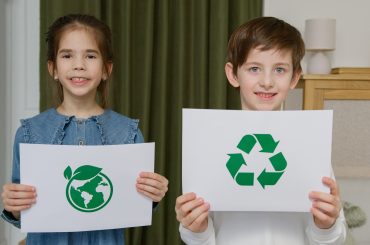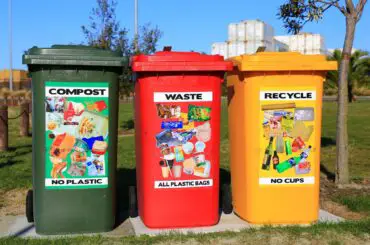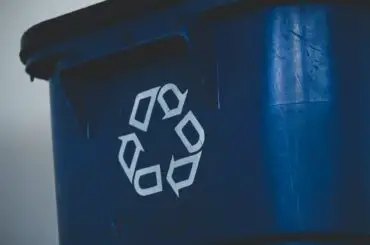Waste production is a growing concern in our modern world, and understanding its significance is crucial for a sustainable future. As human activities and industrial processes continue to escalate, the accumulation of waste materials poses numerous environmental, social, and economic challenges. The consequences of improper waste management can be far-reaching, impacting ecosystems, human health, and the depletion of valuable resources. It is, therefore, essential to delve into the concept of waste production, explore its implications, and seek effective solutions to mitigate its impact. By addressing waste production, we can work towards a cleaner, healthier planet for generations to come.
Contents
 The Types of Waste Production
The Types of Waste Production
Waste production refers to the generation and accumulation of various forms of waste materials resulting from human activities and industrial processes. These materials are no longer useful or desired and require appropriate management to minimize their negative impacts on the environment and human health.
Waste can be categorized into different types based on its physical state and composition. The three main types of waste are:
- Solid Waste: Solid waste includes any discarded materials that are not in a liquid or gaseous state. It encompasses a wide range of items, such as household waste, packaging materials, construction debris, and electronic waste. Solid waste can be further classified into organic waste (food scraps, yard waste), recyclables (paper, plastic, metal, glass), and non-recyclables (e.g., certain plastics, Styrofoam).
- Liquid Waste: Liquid waste refers to any waste materials that are in a liquid form. It includes wastewater from households, industries, and commercial establishments, as well as various chemical and toxic substances that are liquid in nature. Liquid waste can contain pollutants, contaminants, and hazardous chemicals that require appropriate treatment before disposal to prevent water pollution and protect aquatic ecosystems.
- Gaseous Waste: Gaseous waste comprises emissions and byproducts released in the form of gases during industrial processes, combustion, or natural processes. Examples of gaseous waste include carbon dioxide (CO2), methane (CH4), sulfur dioxide (SO2), and volatile organic compounds (VOCs). Gaseous waste can contribute to air pollution, climate change, and adverse health effects when not properly controlled or mitigated.
Understanding the different types of waste is essential for implementing appropriate waste management practices. Effective waste management involves employing strategies specific to each waste type, including recycling, treatment, disposal, or conversion into valuable resources. By addressing solid, liquid, and gaseous waste in a comprehensive manner, we can work towards minimizing their impact on the environment and creating a more sustainable future.
Causes and Consequences of Waste Production
Factors Contributing to Waste Production:
- Consumerism and Overconsumption: A culture of consumerism and the desire for convenience have led to increased production and consumption of goods. The demand for disposable and single-use items has contributed significantly to waste generation.
- Industrial Processes: Industrial activities and manufacturing processes produce substantial amounts of waste materials, including packaging waste, byproducts, and industrial chemicals. The lack of efficient waste management practices in industries further exacerbates the issue.
- Inadequate Infrastructure and Systems: Insufficient waste management infrastructure, such as recycling facilities and waste treatment plants, can hinder proper waste disposal and recycling efforts. Lack of awareness, funding, and coordination also contribute to ineffective waste management systems.
- Lack of Sustainable Practices: The absence of sustainable practices in various sectors, including agriculture, construction, and transportation, leads to waste generation. Inefficient use of resources, improper handling of chemicals, and inadequate waste reduction strategies contribute to the problem.
 Environmental and Health Consequences of Improper Waste Management:
Environmental and Health Consequences of Improper Waste Management:
- Soil, Water, and Air Pollution: Improper waste disposal, especially of solid and hazardous waste, can contaminate soil, water bodies, and groundwater. Toxic chemicals and pollutants from waste can seep into the environment, affecting ecosystems and posing risks to human and animal health. Open burning of waste releases harmful gases and particulate matter, contributing to air pollution.
- Habitat Destruction and Biodiversity Loss: Improper waste disposal can lead to habitat degradation and destruction. Landfills and improperly managed waste sites can disrupt ecosystems, fragment habitats, and threaten wildlife. Biodiversity loss occurs as waste contamination affects plant and animal species, disrupting ecological balance.
- Health Risks and Diseases: Improper waste management creates breeding grounds for disease vectors like mosquitoes, rodents, and flies. Exposure to hazardous waste and pollutants can cause respiratory problems, skin diseases, and other health issues in nearby communities. Improper handling of medical waste can pose severe health risks to healthcare workers and the public.
- Resource Depletion: Waste production contributes to the depletion of natural resources. Extracting raw materials, manufacturing products, and disposing of waste, all require energy and resources. Improper waste management prevents valuable resource recovery and recycling, perpetuating the resource depletion cycle.
- Climate Change Impact: Improper waste management, particularly the release of greenhouse gases from landfills and waste incineration, contributes to climate change. Methane, a potent greenhouse gas, is produced when organic waste decomposes in landfills. Additionally, waste production requires energy and contributes to carbon emissions throughout its lifecycle.
Solutions for Waste Production
Reduce, Reuse, Recycle (3R):
The principles of the 3R approach – Reduce, Reuse, Recycle – form the foundation of sustainable waste management:
- Reduce: Reducing waste at the source involves minimizing consumption and opting for more sustainable alternatives. This can be achieved through conscious purchasing decisions, avoiding unnecessary packaging, and embracing a minimalist lifestyle.
- Reuse: Promoting reuse involves finding creative ways to extend the lifespan of products. This can be done by repairing and refurbishing items, donating or selling used goods, and embracing the sharing economy through initiatives like community tool libraries and clothing swaps.
- Recycle: Recycling is the process of converting waste materials into new products. It involves collecting and processing recyclable materials such as paper, plastic, glass, and metal and transforming them into raw materials for manufacturing. Proper waste segregation and participation in recycling programs are crucial for effective recycling.
Waste Segregation:
Waste segregation at the source is a vital step in waste management. It involves separating different types of waste materials to facilitate proper treatment and recycling. Effective waste segregation offers several benefits:
- Enhanced Recycling: Proper segregation allows recyclable materials to be sorted efficiently, maximizing their potential for recycling and reducing the burden on landfills.
- Resource Recovery: Segregating waste helps identify valuable resources that can be recovered and reused, such as metals, paper, and plastics. This reduces the need for raw material extraction and promotes a circular economy.
- Hazardous Waste Management: Segregating hazardous waste, such as batteries and chemicals, ensures their safe handling, storage, and disposal, minimizing environmental and health risks.
Waste-to-Energy (WtE) Technologies:
Waste-to-Energy technologies offer a viable solution for non-recyclable waste:
- Incineration: Waste incineration involves the controlled combustion of waste, generating heat or electricity. Advanced incineration processes with proper emissions control can minimize air pollution and recover energy from waste.
- Anaerobic Digestion: Anaerobic digestion is a biological process that breaks down organic waste in the absence of oxygen, producing biogas (a mixture of methane and carbon dioxide) and nutrient-rich digestate. Biogas can be used as a renewable energy source, and digestate can be used as fertilizer.
WtE technologies help reduce waste volume, harness energy from waste and reduce the dependence on fossil fuels.
 So, What is waste production and their solution?
So, What is waste production and their solution?
In conclusion, addressing waste production requires a comprehensive and collaborative approach. By following the principles of the 3R approach, implementing effective waste segregation, promoting composting, exploring waste-to-energy technologies, and enacting supportive government policies, we can achieve sustainable waste management. It is our collective responsibility to reduce waste, conserve resources, and create a cleaner and healthier environment for present and future generations. Let us take action and prioritize sustainable waste management practices for a better future.
Wondering whether glass can be recycled? Read it here.





